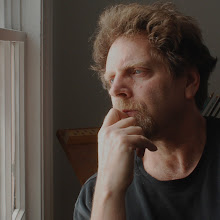
 Plain and fancy.
Plain and fancy. It's a great object lesson to take college kids first to the church of San Marco, then to the monastery next door. Most find the baroque razzle dazzle of the church much more to their taste; the monastery not so much. A few, perhaps do.
Then we inform them that, taste aside, the architecture of the monastery is a much more distinguished example by one of the great Florentine architects of the 15th century. For many American kids this notion is entirely new, particularly in architecture, that poverty (of a voluntary kind) may be good; that asceticism is one road to the golden heights of artistic or literary refinement.
Lynne and I also point out that the origins of the college campus lie right here, in monasticism (cloister becomes the college quad; dormitories much the same), as does the symbiosis between a certain austerity of setting (my barren dorm room in college didn't even have a Fra Angelico fresco on the wall) and the diligent, secluded craft of learning.
They look at me as if I've lost my mind.
I love these corridors, the floor tiles, the serene plaster walls, the delicate ledge capping the wall; and what could be more elegant than the slice-of-bread-thin doorframes made of gray Tuscan stone, arched at the top and closed by a simple, hand-tooled wooden door that Sam Maloof or George Nakashima, had they been 15th-century Florentine tradesmen, might have made?

No comments:
Post a Comment